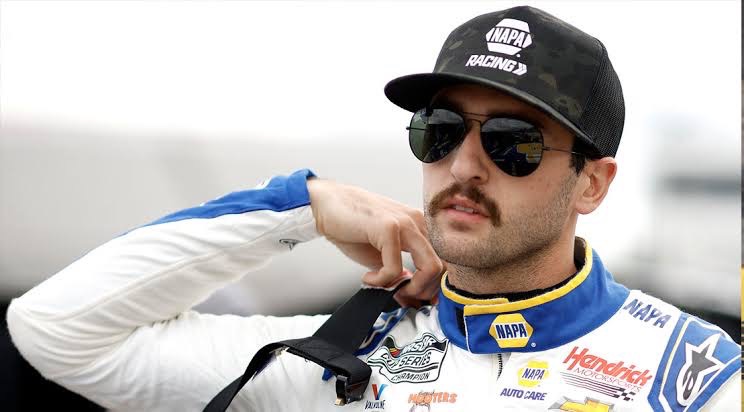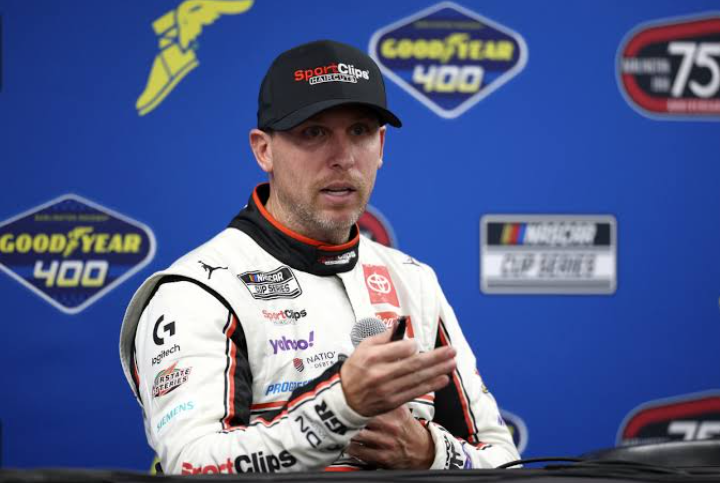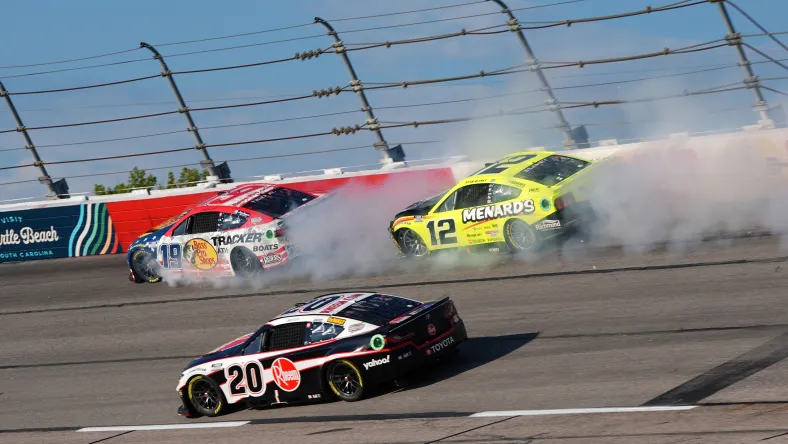Chase Elliott, one of NASCAR’s most prominent stars, is facing a major hurdle ahead of the race at Kansas Speedway. During practice, his No. 9 Hendrick Motorsports Chevrolet experienced engine issues, forcing the team to make an engine change before the main event. For a driver already battling to maintain a competitive edge in the Cup Series, this is a significant setback that could impact his performance throughout the weekend. However, as Elliott’s fans know, he’s a driver who thrives under pressure, and this situation may be another opportunity to prove his resilience.
The engine change is a blow to Elliott’s team, as they are forced to react quickly and make adjustments on the fly. Engine issues can arise at any time, but when they occur during such a critical moment in the race weekend, it creates a ripple effect on the overall strategy. One of the most significant consequences of an engine change is that Elliott will be forced to start at the rear of the field, no matter where he qualifies. This automatically puts him at a disadvantage, as he will have to work his way through traffic from the very beginning of the race, facing the challenges of navigating around slower cars and dealing with the unpredictability of mid-pack racing.
But the story doesn’t end with the engine change itself. Another key aspect of Elliott’s weekend will be how the team handles the tire situation, especially when it comes to the use of scuffs—tires that have been used but are still good enough to provide competitive speed. After the engine change, Elliott’s team made the strategic decision for him to take a lap during qualifying, but not necessarily to secure a good starting position. Instead, the lap is more about tire management.
In NASCAR, tire strategy plays a pivotal role in race outcomes. Teams meticulously plan out how to use their sets of tires over the course of a race weekend, balancing between fresh tires and scuffs. Elliott’s team wants to ensure that they have the best possible tire situation heading into the race, which is why they plan to use the lap in qualifying to scuff a set of tires. These scuffed tires will then be available for Elliott to use during the race, giving him an edge when it comes to tire wear and performance.
If Elliott didn’t take a lap in qualifying, he would be forced to either use his practice tires as scuffs or borrow tires from another team, both of which are far from ideal. Practice tires tend to have more wear and tear, reducing their effectiveness during the race, and borrowing scuffs from another team often means compromising on tire quality. In a sport where even the smallest advantage can make a difference, Elliott and his team are determined to control as much of their tire strategy as possible, even in the face of mechanical setbacks.
The decision to take a lap in qualifying for the sake of tire strategy is a smart one, and it showcases the level of preparation and thought that goes into a NASCAR race weekend. While fans may be used to seeing drivers push hard during qualifying to secure a top spot, Elliott’s approach highlights the nuances of race preparation. Sometimes, it’s not about where you start but about making sure you have the best equipment available when it counts the most—during the race itself.
Elliott’s fans are no strangers to watching him battle through adversity. Over the years, he has earned a reputation as one of the sport’s most determined and capable drivers, especially when the odds are stacked against him. Whether it’s bouncing back from early-race setbacks or finding speed late in the race to make a charge toward the front, Elliott has consistently demonstrated his ability to adapt and overcome challenges.
The Kansas race will undoubtedly test Elliott’s resolve. Starting from the rear of the field is never easy, especially at a track like Kansas Speedway, where clean air and track position can make a significant difference. However, Elliott has faced similar challenges in the past, and his fans will be eager to see if he can replicate his previous comebacks. With the right tire strategy in place and a strong car underneath him—despite the engine change—there’s every reason to believe that Elliott can work his way through the field and contend for a strong finish.
Another aspect to consider is how Elliott’s performance at Kansas could impact his season moving forward. Every race matters, and while this weekend’s engine issues are an unfortunate setback, it’s crucial for Elliott to maximize his performance and come away with as many points as possible. Kansas is one of the more versatile tracks on the NASCAR schedule, offering a mix of high-speed racing and tight corners that require precision and skill. Elliott has had success at similar tracks in the past, and his ability to navigate Kansas’s unique challenges will be a key factor in determining whether he can turn this setback into a positive result.
In conclusion, while the engine change and subsequent start from the rear of the field may seem like a significant hurdle, Chase Elliott and his team are not backing down. They’ve taken a calculated approach to tire strategy, ensuring that Elliott will have the best possible scuffs to use during the race. This decision, combined with Elliott’s proven ability to fight through adversity, means that fans should not count him out just yet. As always, anything can happen in NASCAR, and when it comes to Chase Elliott, expect the unexpected.
As the green flag drops at Kansas, all eyes will be on the No. 9 car to see if Elliott can once again defy the odds and deliver a performance worthy of a champion.




